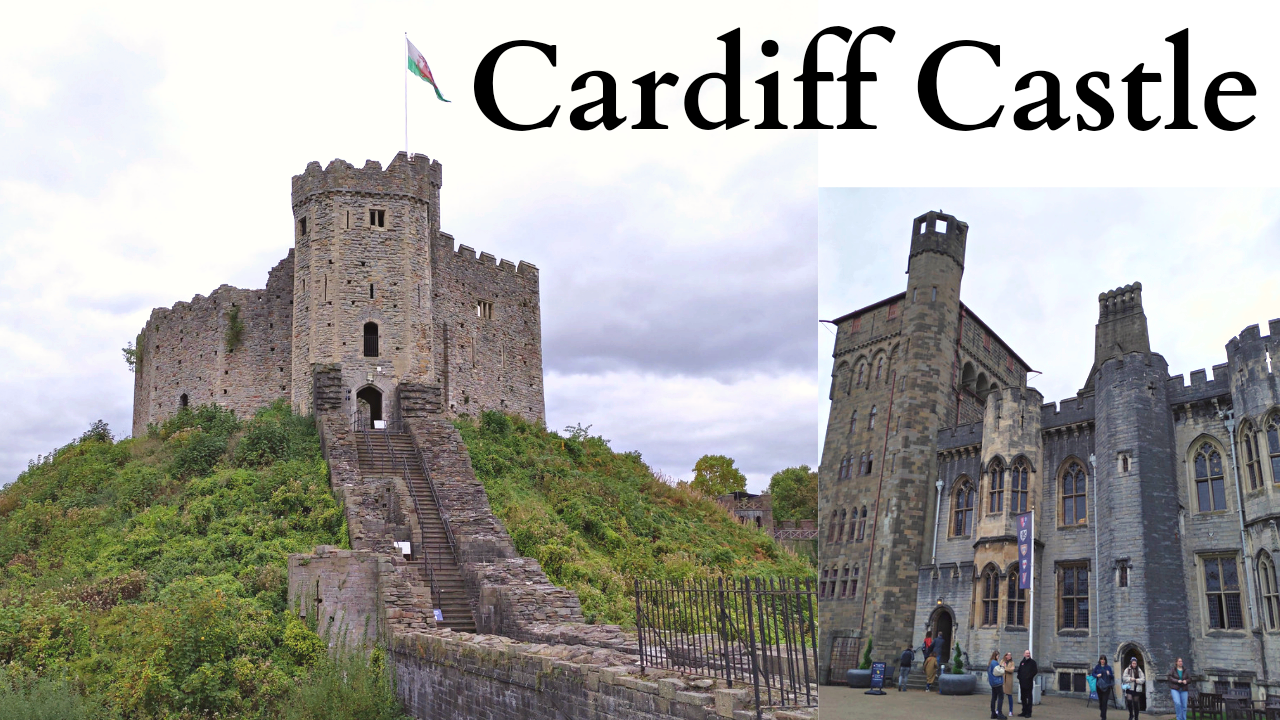Cardiff Castle’s history spans a breathtaking almost two thousand years. The Castle has seen both heroes and villains reside here with stories of intrigue, treachery, rebellions and even murder. Over the Castle’s long history it has fallen into a ruinous condition more than once but thanks to restoration work it is now a stunning Neo Gothic Palace. Today the Castle is owned by the City of Cardiff and open to the public.
| Built | 11th Century |
| Type | Norman Motte-and-Bailey Castle and Gothic Revival Palace |
| Condition | Keep (Extensive Ruins) & Palace (Intact) |
| Ownership | Cardiff City |
| Access | Public – Fee |
Click here to watch our video tour of Cardiff Castle and discover its history
Roman Fort
During the time of the Roman occupation in Britain the Romans built a fort at the site that is now Cardiff Castle. The position was chosen due to it’s important strategic significance as it was where the river Taff meets the Bristol channel. The Romans occupied the site from around AD.60 until the early 5th century. The Romans built a fort on the site four times and they were all roughly square shaped. The first three forts were built from wood but the final fort, built in the fourth century had walls built of stone. Little is known about what happened to the site following this period until the Norman conquest in 1066 when William the Conqueror was crowned King of England.
Remains of the Roman stonework were discovered by a much later owner of the castle, Lord Bute. Lord Bute set about reconstructing the walls but also added a gallery within them which found a very different purpose during World War II when the Roman galleries were used as air raid shelters.
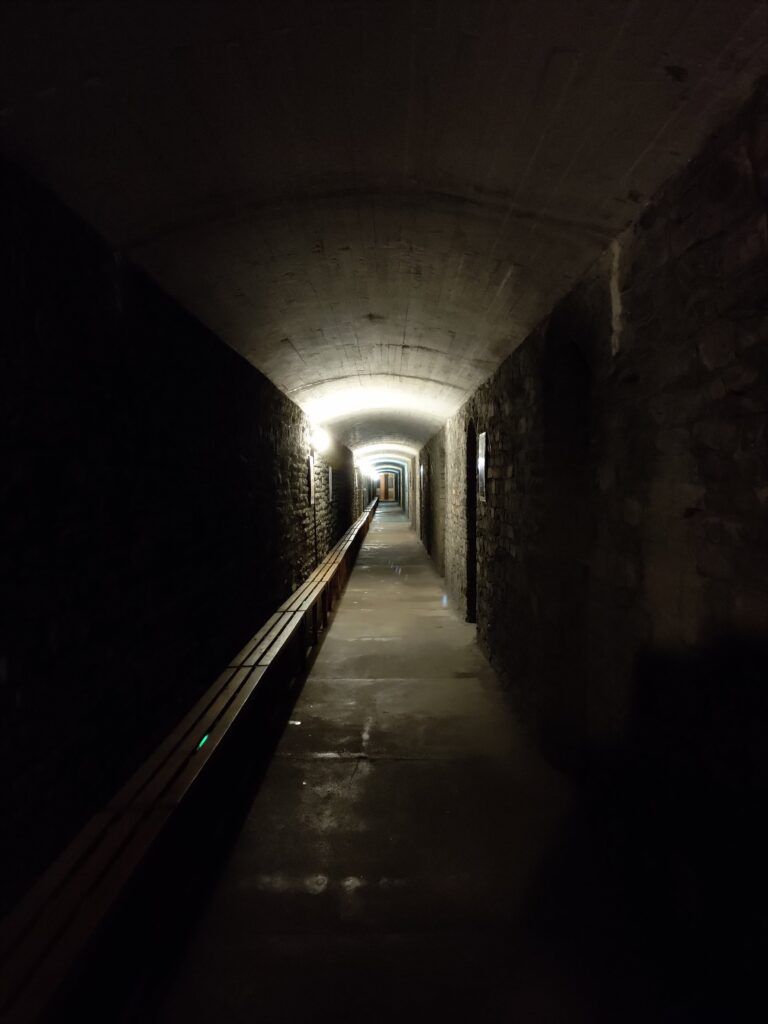
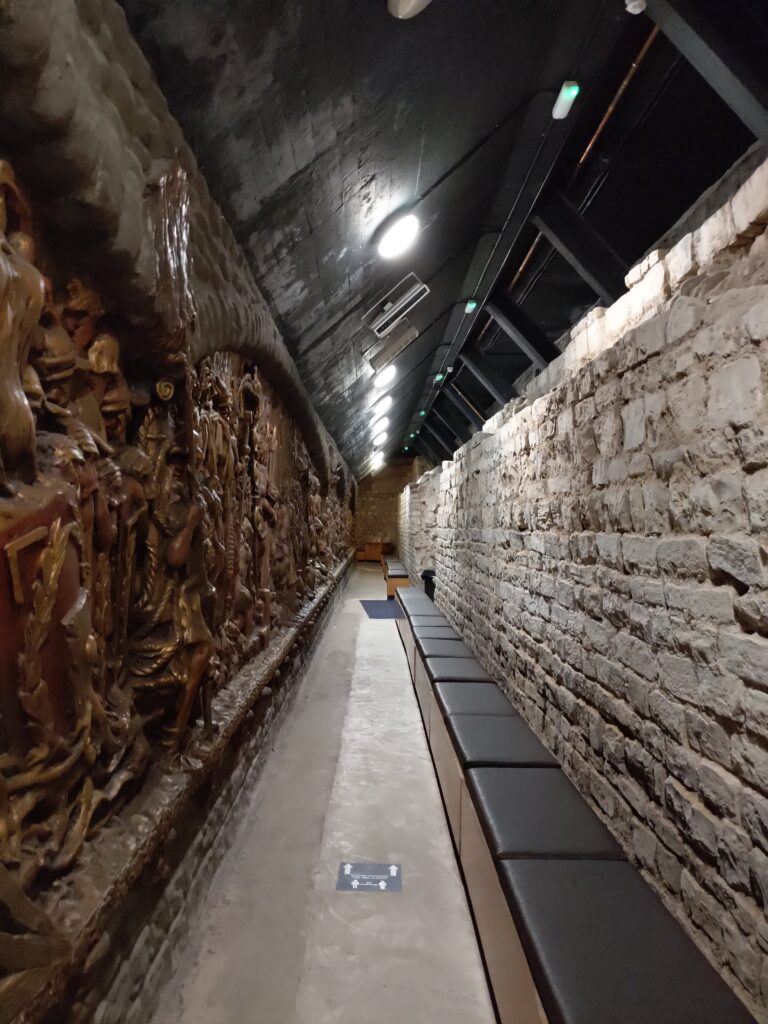
Rebuilt by the Normans (1091-1216)
The Normans spotted the strategic value of the old Roman fort and set about rebuilding it whilst also incorporating the ruins into their new motte and bailey castle.
During this era there was much hostility between the Norman Lords and Welsh Princes. In 1093, Welsh Rhys ap Tewdwr was defeated by Robert Fitzhamon (Norman Lord of Gloucester) and Robert became Lord of Glamorgan. Defence work was carried out on the western side of the site creating an inner ward and at the northern part of the area a 40 foot high motte was constructed (which would have had a wooden keep on top of it).
In 1107, Robert died in battle and the castle passed to his daughter Mabel who married another Robert (King Henry’s illegitimate son, Robert Fitzroy, 1st Earl of Gloucester). Robert became a very accredited man and is believed to have built the first stone keep with a water filled moat around the motte. King Henry requested Robert to imprison Robert of Normandy (the King’s own brother) in his castle from 1126 until his death in 1134.
Robert died in 1137 and the castle passed to his son William, then to William’s daughter Isabel. The castle briefly fell into royal hands after Isabel married the future King John. John divorced Isabel but and after she married again she was able to reclaim the castle and leave it to her sister’s son, Gilbert de Clare, and so began the era of de Clare ownership of Cardiff Castle.
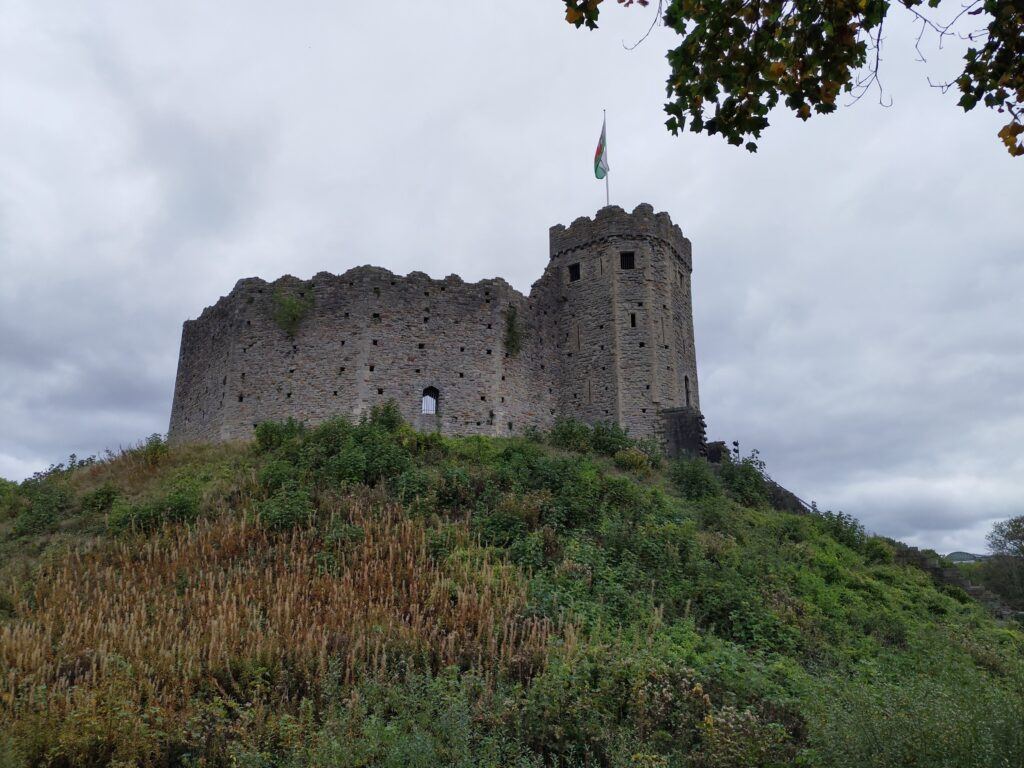
De Clares (1217-1314)
Gilbert de Clare died in 1230. Gilbert’s son, Richard, was only 8 years old at the time. Once he came of age he further strengthened his reign on the Welsh lords but died in 1962.
Cardiff Castle passed on to Richard’s son, Gilbert 7th Earl of Gloucester, also known as Gilbert ‘the red’ (likely because of either his hair colour or fiery temperament in battle). He quickly set to work on strengthening the Cardiff castle’s defences as it had now become an important power and administrative base for fighting the Welsh natives . A central embattled wall was built which linked the keep with the south gate and Black Tower. On the east side of the wall permanent lodgings for knights and men-at-arms were built.
Gilbert’s son, also named Gilbert inherited the castle in 1295, but on his premature death in 1314, the castle passed to his sister, Eleanor. Eleanor married Hugh Despenser.
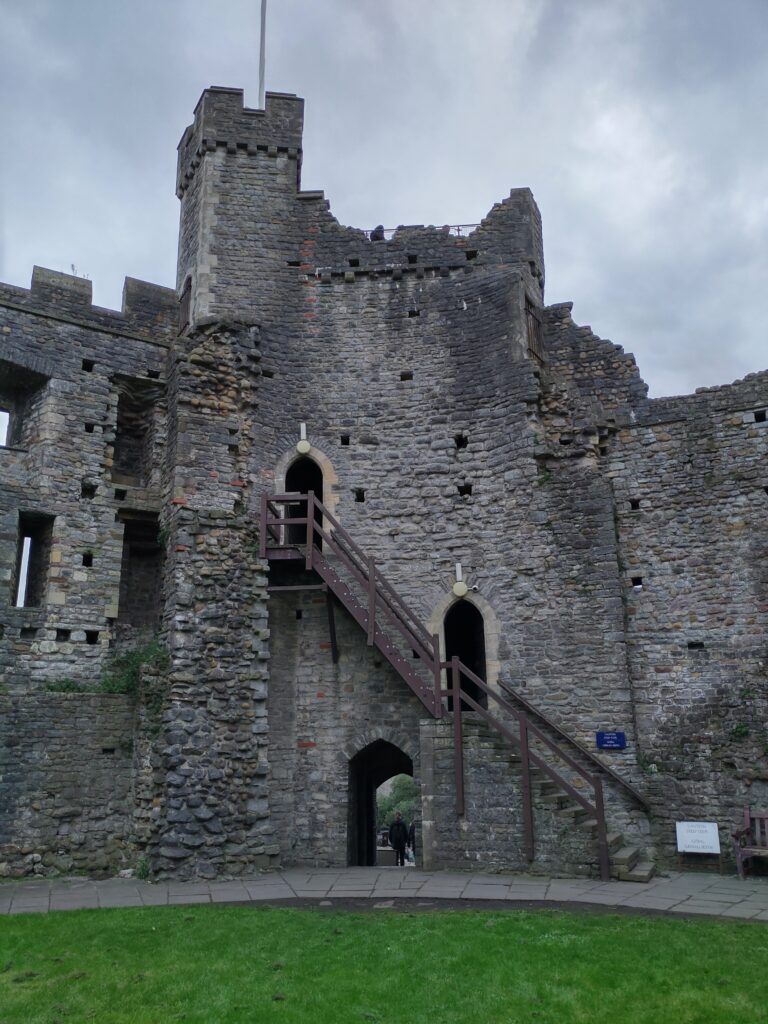
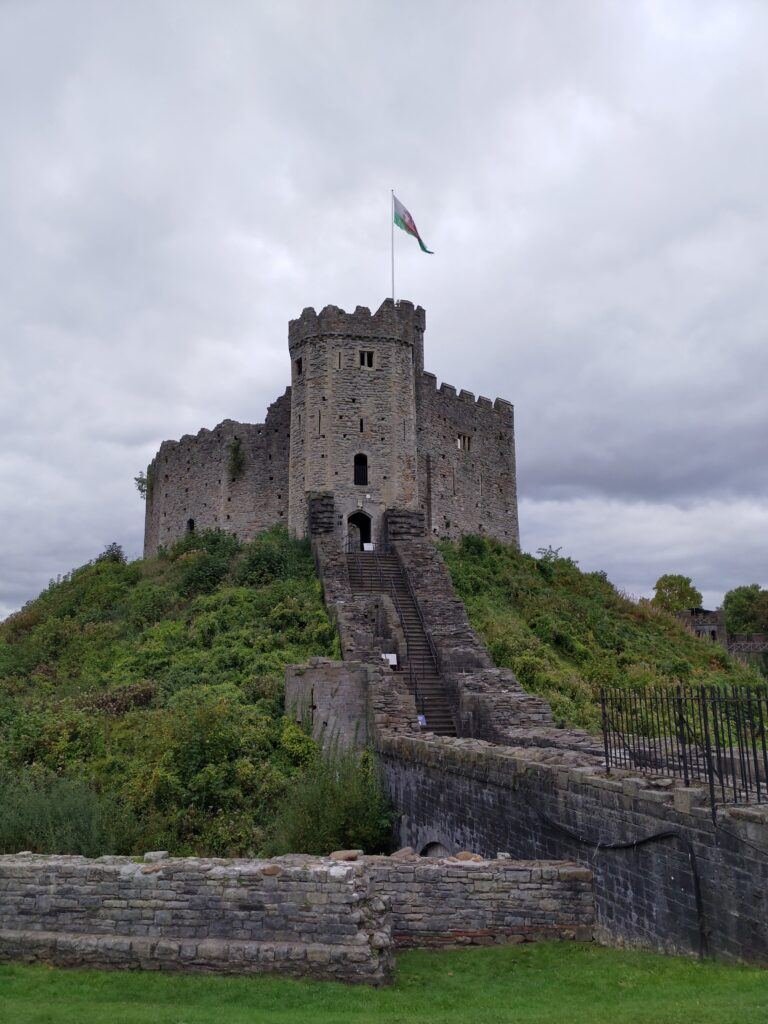
Dastardly Despensers (1317-1416)
During the brief period between Gilbert de Clare’s death and when Hugh and Eleanor Despenser took over the Cardiff Castle, it passed into royal hands. During this time all Welshmen were removed from office and banished from the castle, further increasing the tensions and hatred towards the English.
In 1316 bad weather had destroyed most of the crops in Wales and famine was rife. Llwelyn Bren (great-grandson of the Welsh hero Ifor Bach) rose in revolt against King Edward II. On learning of this rebellion, King Edward II sent 2000 troops to squash the revolt. Llewelyn had no choice but to surrender and requested that he alone should be punished, this impressed many English Lords who believed that Llewelyn should be pardoned. Unfortunately for Llewelyn, he was imprisoned at Cardiff Castle where Hugh Despenser could decide on his punishment.
Hugh Despenser showed no mercy to Llewelyn Bren. Hugh had great influence over the King and decided to prove this to the Lords who had defended Llewelyn by sentencing him without a fair trial and inflicting one of the most horrific executions on him, Llewelyn was hung, drawn and quartered in 1318.
The deeds of Hugh Despenser and King Edward II caused the King’s own wife, Isabella to rise up against them with the help of the mighty Marcher lord, Roger Mortimer and invade England in 1326. The invasion was successful, King Edward II and Hugh tried to flee but were soon captured. Hugh’s deeds came back to bite him when he was sentenced to the same horrific death that he had delivered to Llewelyn, Hugh was hung, drawn and quartered.
Following Hugh’s demise the castle belonged to his widow, Eleanor, until her death in 1337, when it passed to her son (Hugh Depenser II). The castle continued to be passed down the Despenser line until the early 15th century.
In 1400, the Welsh uprising against the English broke out, led by Owain Glyndwr. Tensions and dislike towards the despensers were still particularly sensitive from the murder of Llewelyn Bren in 1318. This fuelled the ferocity at which Owain attacked the castle in 1404. Owain broke through the west gate and set fire to Cardiff Castle and the entire town. Only the monastery was spared as the monks had apparently given a Christian burial to Llewelyn’s body. Owain was later defeated by Prince Henry twice and shortly afterwards his rebellion ended.
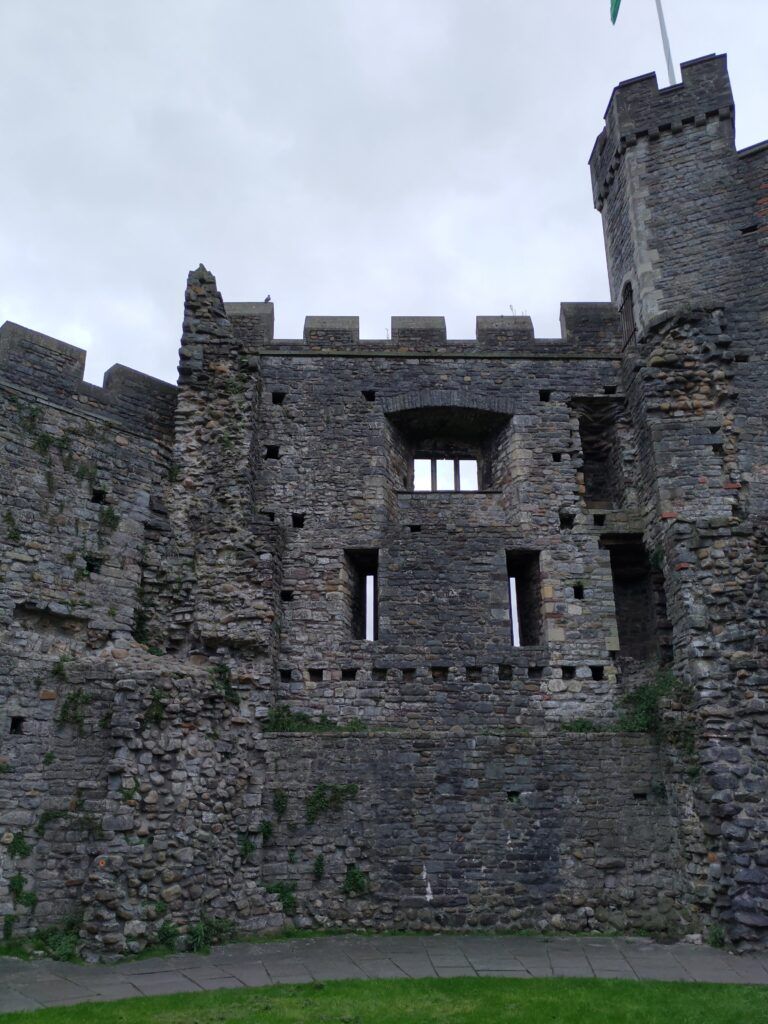
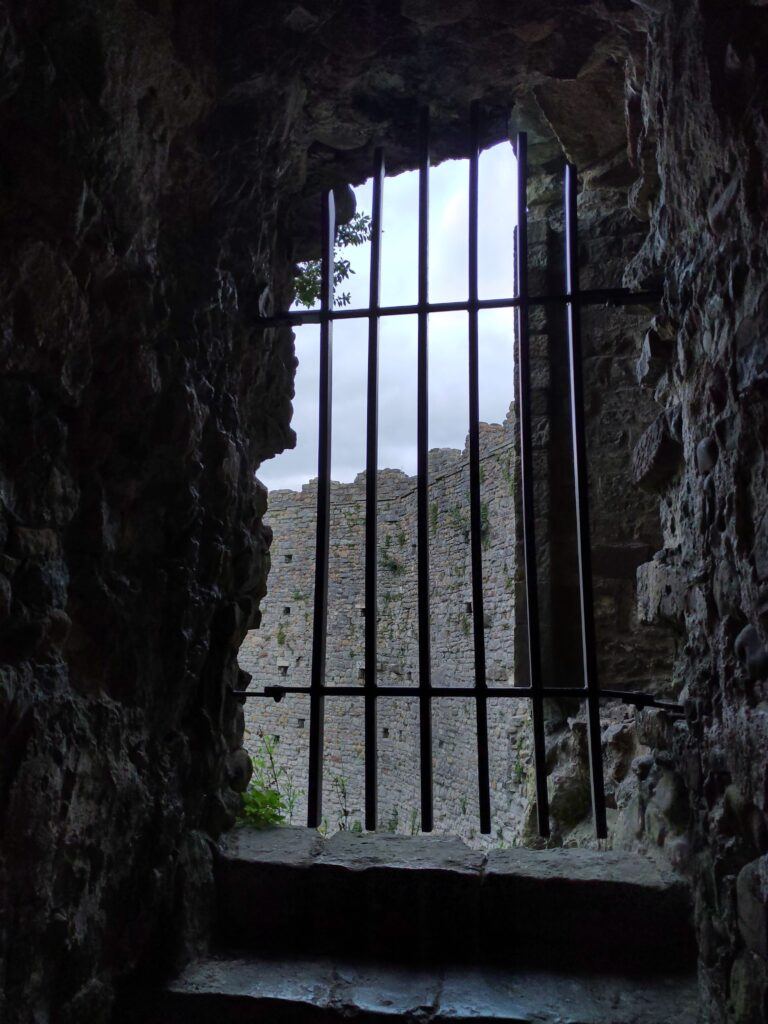
The Beauchamps (1416-1449)
The final dispenser was Isabel Despenser, who married Richard Beauchamp and so Cardiff Castle passed to the Beauchamps. Richard died in 1422 and Isabel went on to marry his cousin, also named Richard.
After Owain Glyndwr’s defeat, Glamorgan entered a more peaceful phase and Richard began making plans to build new lodgings with a central octagonal tower along the west curtain wall. He also constructed a new tower alongside the Black Tower, renovated the gatehouse and improved the castle’s defences.
The Nevilles (1449-1486)
Cardiff Castle passed into the Neville family when Ann Beauchamp married Richard Neville (later the Earl of Warwick). Richard was a key figure in ‘The War of The Roses’, he was initially a Yorkist but swapped sides later and became a Lancastarian. He was instrumental in the removal and new placement of two kings, which earned him the nickname ‘Kingmaker’. Richard died in 1471 at the Battle of Tewkesbury.
The castle passed to Richard’s daughter, Ann, who married Richard, Duke of Gloucester (later King Richard III). Richard died at the ‘Battle of Bosworth’ in 1485 and the new king, Henry VII gave the castle to his cousin, Jasper Tudor.
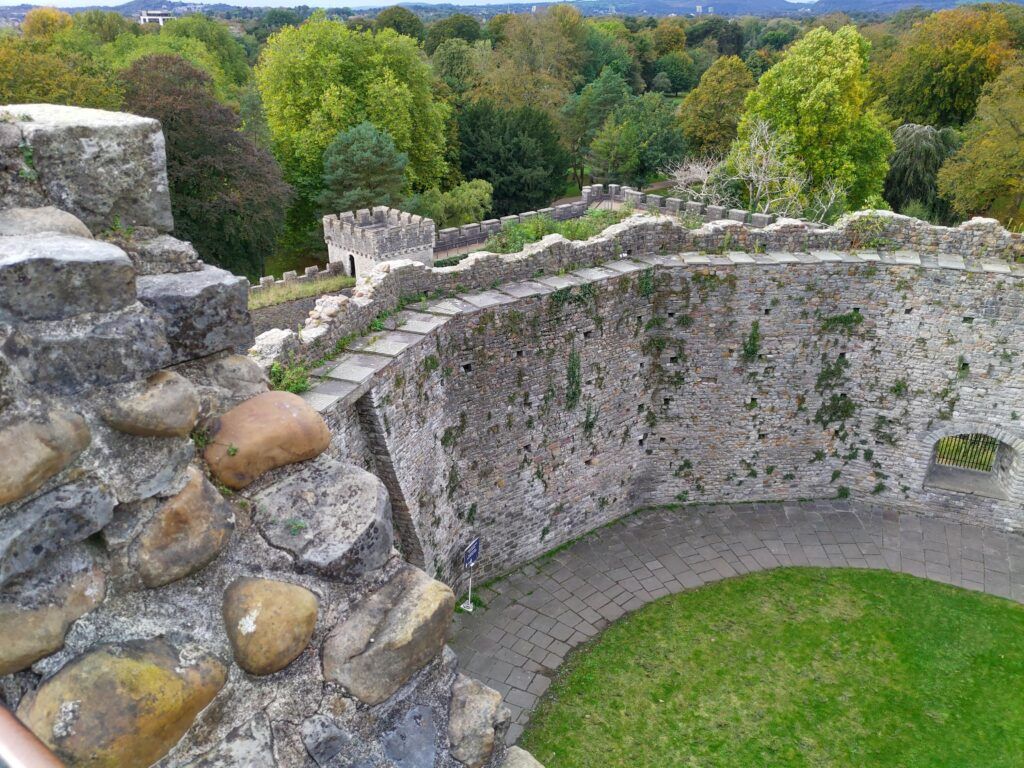
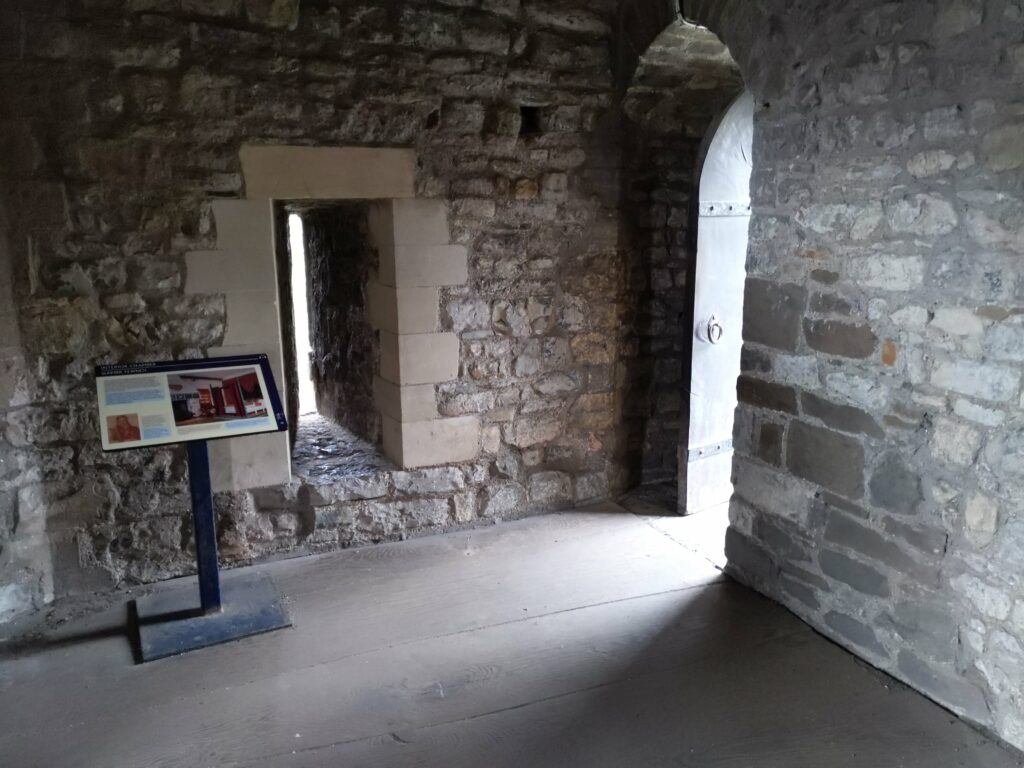
The Tudors (1486-1551)
The Tudors originated from Wales and this helped ease the tensions between the English and Welsh. In 1495 the Marcher status at Cardiff Castle was formally revoked and the castle became less important for defence and its condition began to deteriorate.
The Herberts (1551-Civil War)
In 1551, William Herbert (Earl of Pembroke) acquired Cardiff Castle from King Edward VI (William also was given Caerphilly and Castell Coch). William set about renovating the now dilapidated castle in the 1570’s. He wished to create a more palatial residence and succeeded in building an Elizabethan extension in the inner bailey, a shire hall, chapel and gardens in the outer bailey and much repaired the castle keep. The castle, particularly the Black Tower, was used as a prison, however more troubled times loomed.
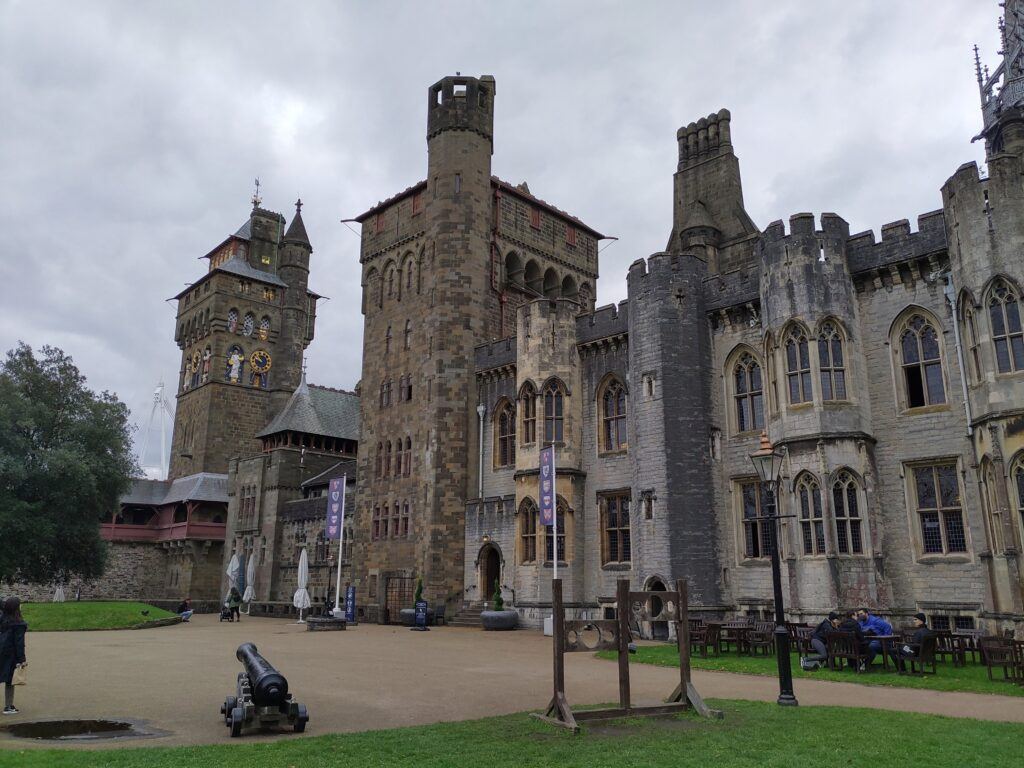
Civil War
When the Civil War broke out in 1642, the castle’s owner was Philip Herbert. Philip was a Parliamentarian, however Wales was mostly pro-Royalist and the Royalists soon captured the castle. Cardiff castle was then won back by the Parliamentarians but before long a surprise attack from William Seymour put it back in Royalist hands, but not for long as straight away Parliamentarian forces and local troops reclaimed the castle. The castle continued toing and froing between Royalist and Parliamentarian occupation during the war and was very badly damaged. Following the war, the extent of damage that the war had inflicted on the castle made it uninhabitable and it was deserted as a residence after.
The castle passed into the Windsor family for a time until Charlotte Jane Windsor married Lord Mount Stuart (1st Marquess of Bute)
The Butes (1776-1947)
The Bute family changed the fortunes of Cardiff Castle and Cardiff City. They brought immense prosperity to Cardiff City from coal exporting and refurbished and transformed Cardiff Castle into a magnificent gothic style castle. They also drastically renovated and altered the nearby Castell Coch.
Lord Mount Stuart (1st Marquess of Bute) employed the famous landscape artist, Capability Brown and his son-in-law, Henry Brown and they began their ambitious alteration project. A large proportion of Cardiff Castle’s medieval buildings were destroyed, including the Shire Hall, the Knights houses, the stone wall that had separated the inner and outer bailey, the moat was filled in and the ivy that was growing up the keep was removed.
The additions that the Herbert’s had added to the main lodgings were demolished and remodelled. Two new wings were added to the lodgings in a Georgian Gothic style and the great hall was partitioned into an Entrance Hall, Library and Dining Room.
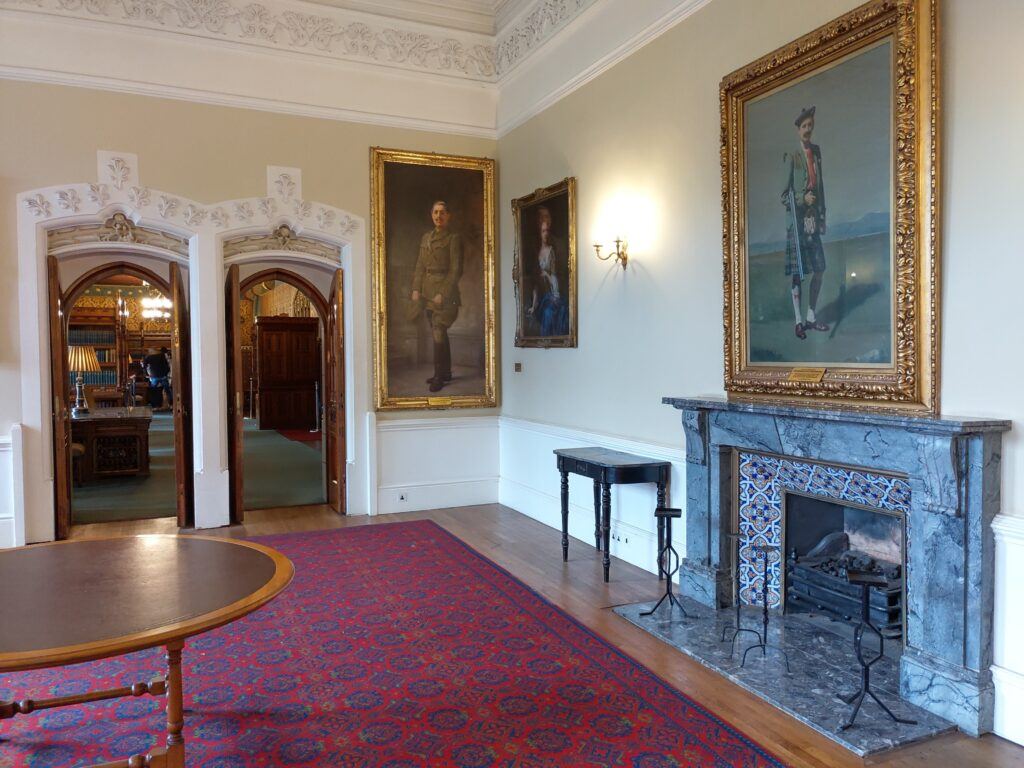
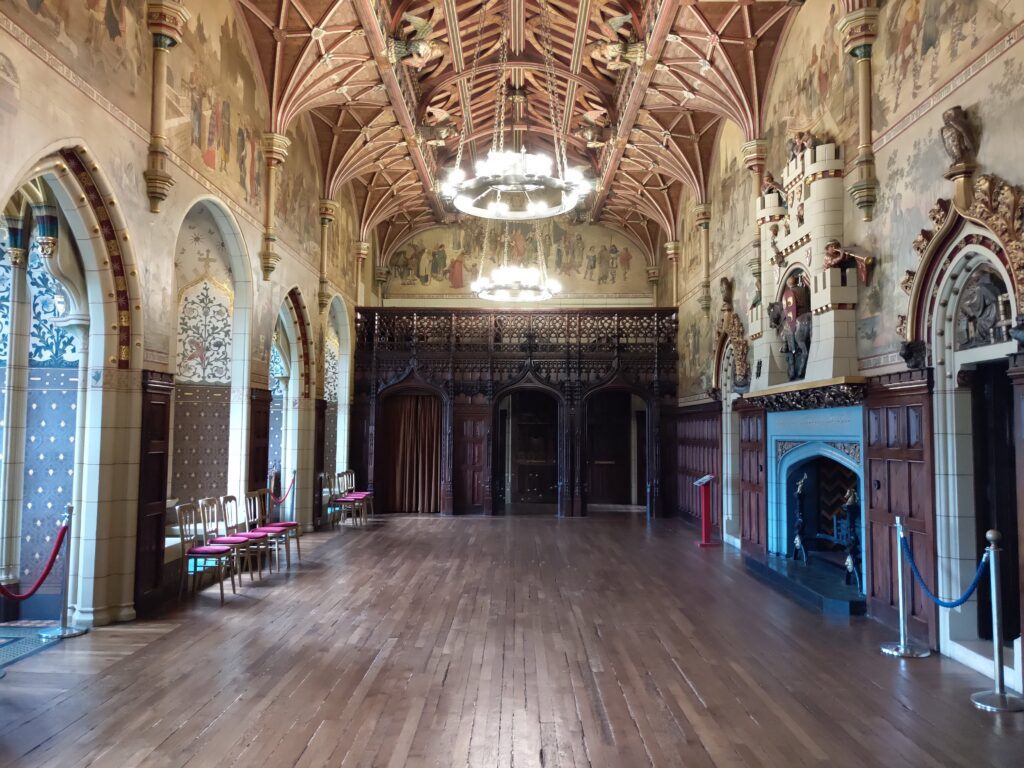
In 1848, Cardiff Castle passed to the 3rd Marquess of Bute. The Lord’s financial fortune soared and in 1868 he enlisted the famous architect William Burges to transform the castle into his dream Neo Gothic castle. A team of local historians assisted with the project and no expense was spared on ensuring he had the finest Welsh craftsman.
They began by building a 150 foot Clock Tower with rooms inside lavishly decorated with carvings, gildings and cartoons illustrating the seasons, myths and fables. The Bute and Herbert Towers were rebuilt as well as new Guest and Tank Towers. A stunning roof garden was added to the top of the Bute Tower. In 1872 Lord Bute married Hon Gwendolen FitzAlan Howard and a special nursery was built for the four children that the couple had. The central part of the castle was renovated and contained a two storey Banqueting Hall and a massive Library. In front of the castle a stunning stone carved animal wall was created.
The 3rd Marquess of Bute died in 1900 and the castle passed to his son, the 4th Marquess. Further restoration work continued on the Castle Walls, reconstructing the Roman Wall to Duke Street and another tower was added, the Barbican Tower. However, the family wealth and investments were drastically diminishing.
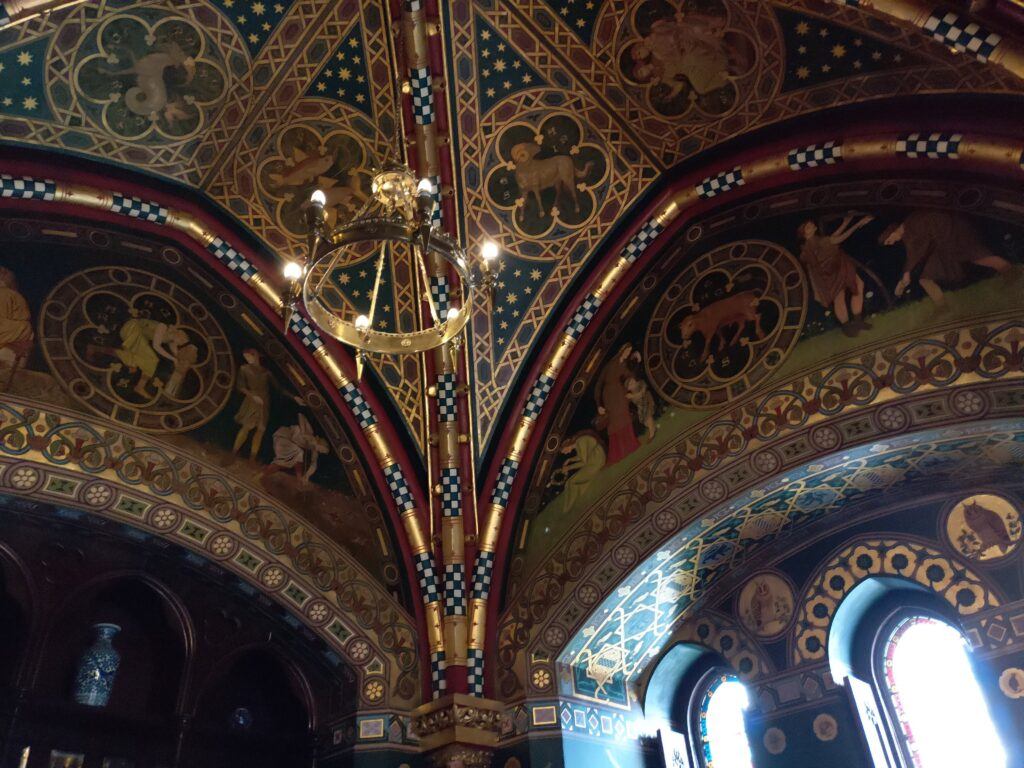
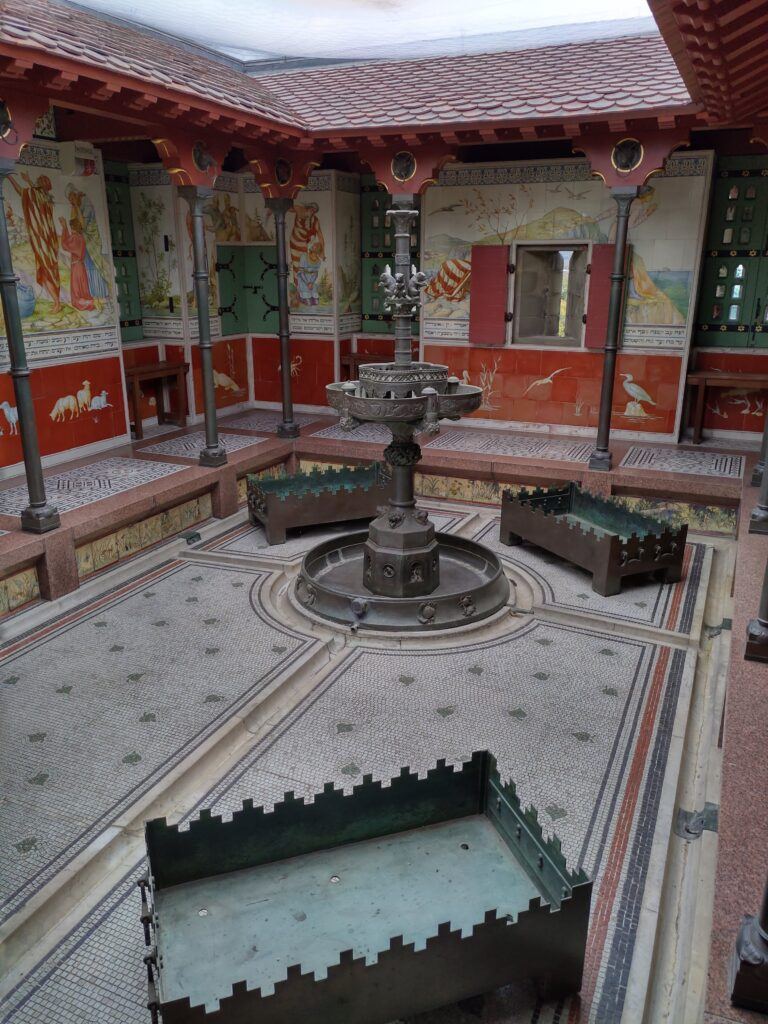
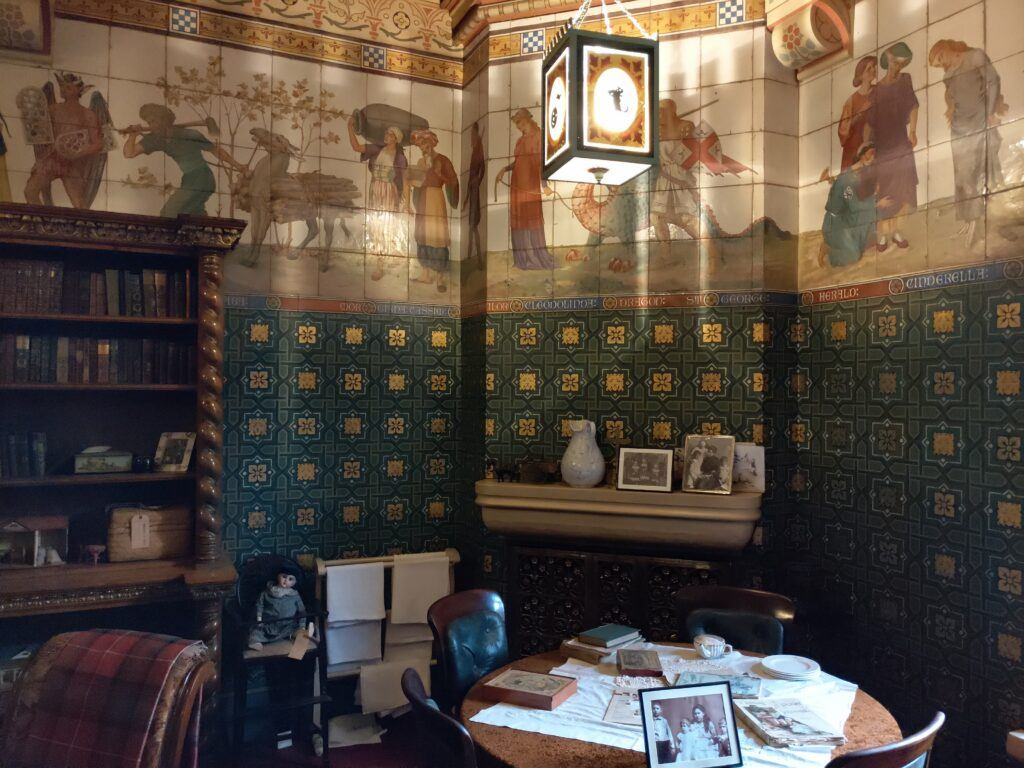
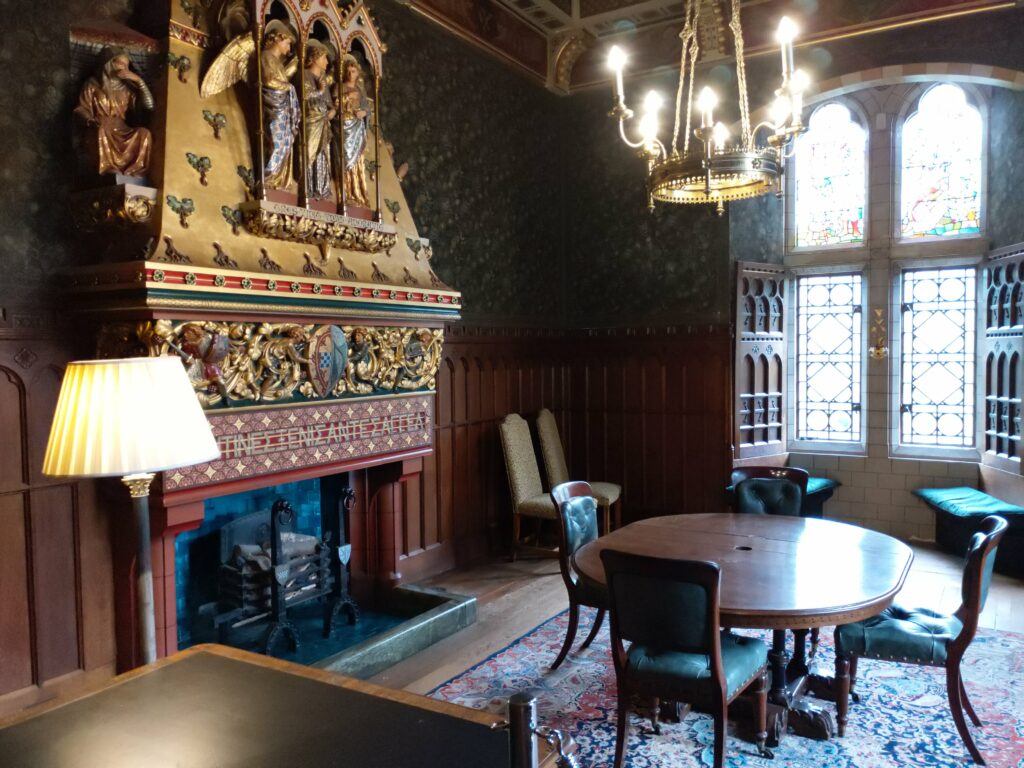
World War Two
During World War II, the tunnels at Cardiff Castle were used as air raid shelters and they could hold upto 1800 people. The castle escaped with little damage, just two lodges were destroyed during the war.
A Special Gift To Cardiff City
In 1947, the 5th Marquess of Bute inherited Cardiff Castle. The family’s fortunes had already vastly declined and the new Marquess faced crippling death duties. He sold the remaining lands that the family owned in Cardiff and gifted Cardiff Castle and surrounding park to the people of Cardiff.
Cardiff Castle is a grade I listed building and a scheduled monument. It is now a tourist attraction and open to the public. Click here to read our blog about exploring Cardiff Castle.
Postcode CF10 3RB
Click below to watch our video on the history and exploring Cardiff Castle

